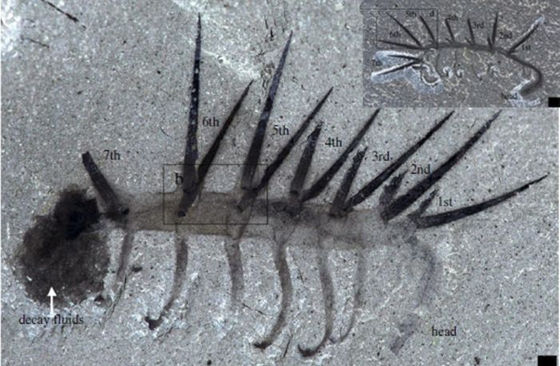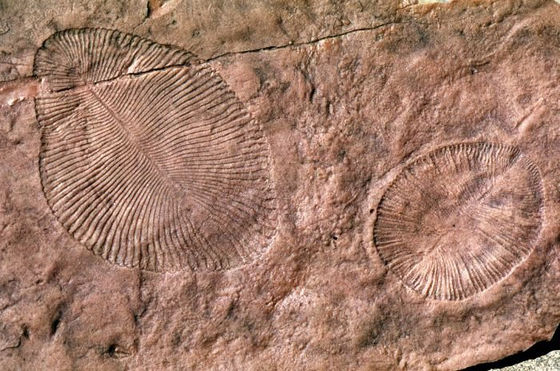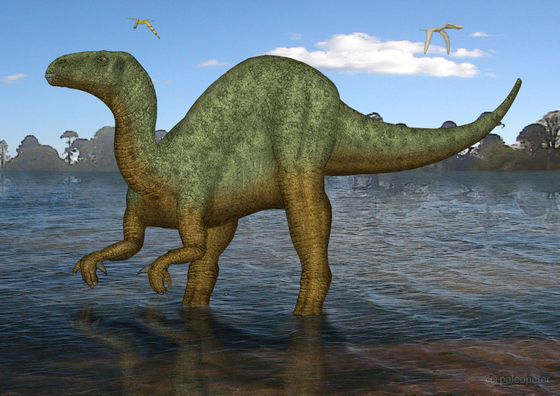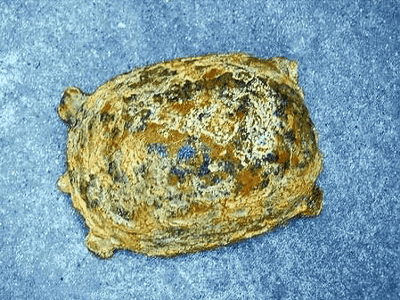5 ancient creatures that are said to have had the wrong imagination

by
Just as the theory that Tyrannosaurus , the most famous dinosaur, was covered with feathers like a chicken came out in recent years, there are many ancient creatures that have been overturned by the established theory as research progresses. Science Alert, a science news site, has summarized such 'ancient creatures that were wrongly predicted', including those that are still under discussion.
The Famous Fossils Scientists Got Incredibly Wrong
https://www.sciencealert.com/five-times-we-got-a-fossil-amazingly-wrong
◆ 1: 4-legged snake
The fossil of Tetrapodophis ampectus was the topic of the Palaeontological Society of Japan in 2015 as a 'four-legged snake.' This fossil was excavated from the early Cretaceous (about 146 to 100 million years ago) strata in northwestern Brazil, and is long and flat in aquatic animals despite having four legs. The lack of a tail has attracted a great deal of attention as a proof that 'snakes are not a species that evolved from aquatic animals.'
Four-legged snake fossil found in Brazil Advances to elucidate evolutionary process 1 photo International News: AFPBB News
https://www.afpbb.com/articles/-/3055393

Studies at the time concluded that the fossil was a 'new species of snake,' but a new study published in 2021 found that the fossil was not a snake, but a species of ' dolichosaurus, a closely related species of lizard.' I am advocating the theory.
It is possible that the fossil known as the 'four-legged snake' is actually a different animal than a snake-GIGAZINE

by Dave Martill, University of Portsmouth
Regarding the series of events, Science Alert commented, 'It is thought that discussions will continue about this fossil, but in any case, the fossil itself is in a very good state of preservation, so I think there is something that can be gained from the fossil.' doing.
◆ 2: Head of Hallucigenia
It is said that it lived in the Cambrian period (about 542 million to 488.3 million years ago), with elongated legs lined up like a centipede on the ventral side of the slender body, and thorns lined up on the back side. The mysterious shape is Hallucigenia . As mentioned above, this Hallucigenia is characterized by its legs and thorns, but it was thought that it also had a bulb-shaped head that was so huge that it did not look like a body.

By
However, most of the Hallucigenia fossils excavated after that were 'neckless'. From this, the debate about the head of Hallucigenia was activated, and it was found in the subsequent research that the part that was thought to be a bulbous head was the contents of the intestine that was pressed in the soil and popped out of the anus. In modern times, the head of Hallucigenia does not have such an unusual shape, and the classification has been changed to a type of lobopodia represented by tardigrades.
◆ 3: Organisms that did not know whether they were animals, plants, or fungi
Dickinsonia is an organism that has had endless debates about identity since it was discovered in 1947. The Dickinsonia fossil excavated in Australia has a flat shape with a diameter of about 1 meter on the flat side and only about 3 mm on the thick side, and has grooves radiating from the center to the periphery.

By University of Oregon
At the beginning of the discovery, the theory that this creature was 'a jellyfish' was advocated, but in subsequent research, the theory that 'it is an ancestor of this creature' and 'a creature that has nothing to do with this creature' Two of the theories appear. The former commentator radial grooves somite regarded as initial annelids claimed that the latter commentators are regarded as not somites, but unknown organism nor fungus at unless organisms in animals present in this world Insisted.
This debate has been going on for a long time, but in 2017 a research team at Oxford University conducted a study simulating the growth and aging of Dickinsonia with a computer model. According to this study, Dickinsonia is considered to belong to one of the most primitive animals, flat animals or eumetazoa , which have no nerve cells or muscle cells, let alone organs and tissues of the digestive tract, respiratory system, and excretory system. I am.
◆ 4: Iguanodon horn
Iguanodon, which is said to have inhabited the Early Cretaceous of the Mesozoic (about 126 to 113 million years ago), is also known as the second-named dinosaur in history, and is one of the most well-known dinosaurs in history. Known as a species.

by
Gideon Mantell , a 19th-century doctor who discovered such iguanodon, found that a huge fossil excavated during road construction resembled Iguana's teeth, but because of its size, it was called this fossil. I guess it is the part that corresponds to the 'horn' that the rhino has. This giant horned creature was given the name 'Iguanodon', meaning 'iguana's tooth', because it had a rhino-like horn and an iguana-like body.

Until the middle of the 19th century, iguanodon was supposed to have large horns as Mantel imagined, but in 1878 more than 30 complete whole-body skeleton specimens were excavated from the Bernisal coal mine in Belgium. The fossil in question turned out to be a thumb bone as long as 15 centimeters.
A new discovery revealed that Mantel's predictions were wrong, but Science Alert pointed out that even today it is not known what Iguanodon used his giant thumb for. It's not a messed up hypothesis because it has horns. '
◆ 5: Urvogel
'Urvogelx' is an animal that is thought to be the ancestor of modern birds that lived in the Jurassic period (about 21.30 million to 145.5 million years ago). Named 'ancient bird' in ancient Greek, the animal was initially described as 'the closest dinosaur to modern birds' due to its characteristic feathers, but its classification is still controversial as of 2021. it is continuing.
.jpg)
By Vesta
Only 12 fossil skeletons, which are said to be archeopteris, have been excavated even in modern times, and in 2017, one of them even appeared to be the theory that 'a completely unknown dinosaur of a different species from archeopteris'. A similar theory appeared in 2019 about another fossil of Archeoptericus, but this was countered in 2020.
As mentioned above, not only the classification of archeoptericus as a bird or a dinosaur, but also its fossil itself is controversial. 'It's a mysterious animal, but whichever the controversy turns, it will provide new insights into the world,' said Science Alert.
Related Posts:






